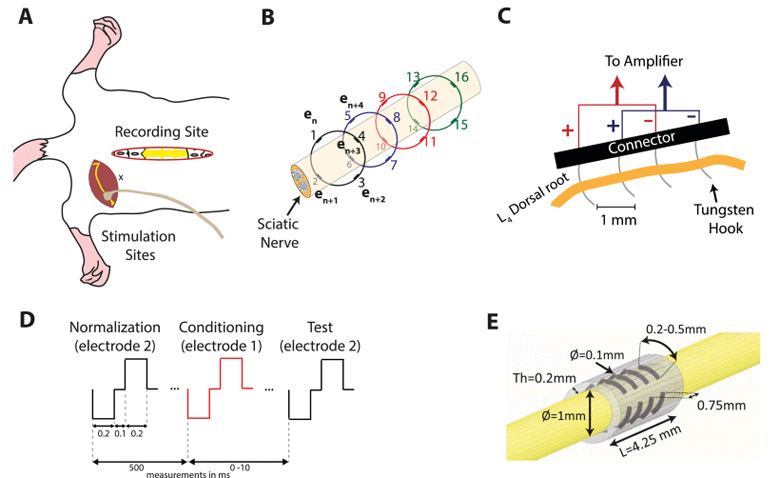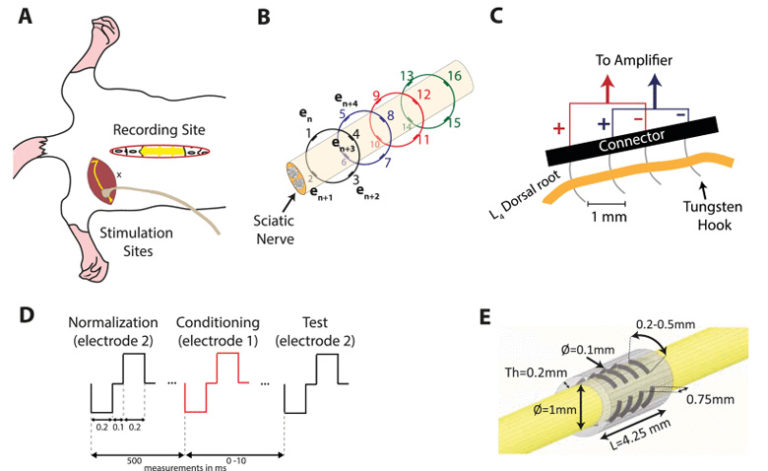
Multi-channel nerve cuff electrode arrays can provide sensory feedback to prosthesis users. To develop efficacious stimulation protocols, an understanding of the impact that spatio-temporal patterned stimulation can have on the response of sensory fibers is crucial. We used experimental and modelling methods to investigate the response of nerve fibers to paired-pulse stimulation. Nerve cuff electrode arrays were implanted for stimulation of the sciatic nerves of rats and the sensory compound action potentials were recorded from the L 4 dorsal root. A model of the nerve cuff electrode array and sciatic nerve was also developed. The experimental and modelling results were compared. Experiments showed that it took 8 ms for the sensory fibers to completely recover from a conditioning stimulus, regardless of the relative position of the electrodes used for stimulation. The results demonstrate that the electrodes on the cuff cannot be considered independent. Additionally, at 120% of the threshold, there is a large overlap in the fibers that were activated by the different electrodes. If a stimulus paradigm considered the electrodes as independent, stimuli from the different electrodes would need to be interleaved, and the intervals between the stimuli should be greater than 8 ms.

